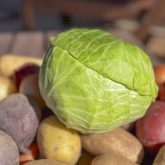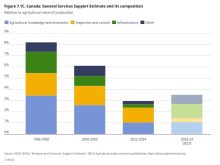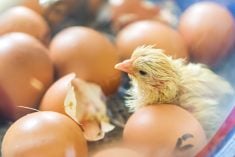I recently had the opportunity to visit Siemens Farms, a commercial egg barn in southern Manitoba, alongside the Manitoba Egg Farmers.
I grew up around chickens on a small farm, but wasn’t sure what to expect from a large-scale operation. I imagined a lot of noise and a strong barn smell. What I experienced was the opposite.
The barn was calm and clean. The hens clucked softly as they scratched and pecked the floor. And thanks to impressive technology managing temperature, humidity, air flow and waste, it was remarkably lacking in smell.
Read Also

The long march to autonomy
The big players in the machinery market keep adding pieces towards autonomous vehicles for farming, but how far away is a final product?
Harley Siemens, a fourth-generation farmer, gently picked up a bird as he described how egg farming has changed over the years. His soft voice and steady hands said everything: while the technology in the barns may have evolved, the care and attention given to the birds remains the same.
We talked about supply management, hen nutrition, housing transitions and the journey of an egg from nest to store shelf. It was a reminder that behind every carton of eggs is a complex system designed to deliver safe, nutritious food to Canadians.
Eggs from Manitoba
Almost every egg you see in a Manitoba grocery store was laid on a Manitoba farm just days earlier. On average, eggs are delivered to stores within three to five days of being washed, graded, packed, and refrigerated.
Under Canada’s supply management system, farmers like Harley own a quota that allows them to produce a specific number of eggs to meet local demand. It’s a nationwide system that supports fair farm income, prevents overproduction and waste and ensures food security for Canadians.
Manitoba egg farms can house up to 125,000 laying hens, but most have fewer. The average sits around 17,000 hens.
Our farmers are transitioning from conventional housing (the typical small cages) to alternative housing systems that offer more space, nesting boxes, perches and scratch pads. Farmers can choose enriched housing that uses cages, free-run or free-range organic options.
So many egg choices
If you’ve ever stood at the grocery store egg cooler wondering what the difference is between free-run and free-range, or between Omega-3 and vitamin-enhanced eggs, you’re not alone. Here’s a quick guide:
Housing labels:
• Conventional (being phased out): Hens in small group cages, limited movement.
• Enriched, furnished, comfort coop or nest laid: More space, perches, scratch pads and private nest boxes.
• Free run: Hens roam inside the barn with access to perches and nests and can dust bathe. No outdoor access.
• Free range: Similar to free run, but with some outdoor access (weather dependent).
• Organic: Outdoor access, organic feed and enhanced barn environments.
• Pastured: Hens roam freely outdoors, usually on small farms.
Nutrient labels:
• Omega-3: Hens are fed flax seed and other sources of omega-3 fatty acids.
• Vitamin enhanced: Hens get extra nutrients like vitamins B12, D or E in their feed.
• Vegetarian: Feed contains no animal byproducts (Note: chickens are naturally omnivores).
Nutritionally, all eggs are a good source of protein, vitamins and minerals. Brown or white shells don’t affect nutrition. Shell colour is simply a result of the hen’s breed. Yolk colour varies with a hen’s diet and doesn’t necessarily mean the egg is fresher or more nutritious. The more greens, corn or calendula petals a hen eats, the darker the yolk.
Egg storage and safety
Have you ever wondered why people in other countries keep their eggs on the counter, while we store ours in the fridge? It all comes down to how different countries manage food safety and prevent salmonella illness.
In Canada, commercial eggs must be refrigerated because they’re washed to remove dirt and bacteria. This process also removes the egg’s natural protective layer, called the cuticle or bloom, making refrigeration essential.
In contrast, many countries choose to vaccinate their hens against salmonella and avoid washing eggs to preserve that protective coating.

The methods may differ, but the goal is the same — safe, fresh eggs. Here in Canada, we can do our part by keeping our eggs refrigerated.
Here’s how long you can expect to keep your eggs in the fridge:
• Raw eggs: See the best before date (although eggs are often good for a period afterward).
• Hard-cooked eggs in shell: seven days.
• Peeled hard-cooked eggs: five to seven days.
• Cooked egg dishes with other ingredients, such as quiche or egg roll: three to four days.
Food safety is always the priority. If you’re unsure, don’t eat them. If using raw eggs past the best before date, crack them into a separate bowl to ensure they look and smell as you would expect them to.
Whether you raise your own hens, buy eggs directly from a farmer or pick them up at the grocery store, you can’t go wrong. They’re nutritious, delicious and very versatile.
[gps-image name=”147840_web1_egg-chive-roll-sq.jpg”]
Cheddar bacon egg chive roll
This egg roll is easy, flexible, and great for brunch, lunch, or even a light supper. You’ll love the fresh chives and delicate blossoms in early summer, but try it with dill, oregano, basil or thyme too. You can also vary this recipe to fill with ham and Swiss cheese, spinach and feta or sautéed mushrooms with gruyère.
Makes: three servings
Ingredients
• 6 large eggs
• 1/4 cup milk or cream
• 1/2 tsp salt
• 1/4 tsp pepper
• 2 tbsp fresh chives, chopped
• 1–2 tbsp chive blossoms (optional)
• Butter or oil for greasing pan
Filling:
• 1 cup sharp cheddar cheese, shredded
• 4 strips bacon, cooked and crumbled
• Extra chive blossoms and chopped chives for garnish
Instructions
Preheat oven to 375F (190C). Line a 9×13-inch baking sheet with parchment and grease lightly.
Whisk eggs, milk, salt, pepper, chives and blossoms in a bowl.
Pour into the prepared pan, tilting to spread evenly. Bake eight–10 minutes, just until set.
Remove from oven, sprinkle with cheese and bacon. Gently roll up from the short side.
Slice and garnish. Serve warm or chill and reheat gently later.
Source: gettystewart.com

High protein egg sliders
Makes: 12 sandwiches
Ingredients
12 large eggs
1 cup cottage cheese (two per cent milk fat)
½ tsp each of salt and pepper
12 tray buns (soft dinner rolls)
4 tbsp honey Dijon mustard
200 grams deli turkey
200 grams deli ham
1 cup shredded cheddar cheese
About 6 slices Havarti cheese
2 tbsp butter
½ tsp garlic powder
1 tsp parsley, fresh or dried
Instructions
Preheat oven to 375F (190C).
Line a 9×13-inch baking sheet with parchment paper.
Crack eggs into a blender. Add cottage cheese, salt and pepper and blend until smooth. Pour onto prepared baking sheetand bake for 20-25 minutes, or until eggs are cooked.
Remove and sprinkle with shredded cheddar cheese while still hot. Set aside.
Slice tray buns horizontally (keeping the tops and bottoms paired). Spread both sides with mustard. Layer on deli turkeyand ham onto bottom halves.
Fold the cooked and cooled sheet-pan eggs in half and place on top of deli meat. Top with remaining Havarti cheese and tops of buns.
Cook the sliders. Place sliders on the sheet pan, cover with foil and heat in an oven set to 350F (180C) until the cheese melts, approximately 10-12 minutes. (These sliders can be made ahead, refrigerated overnight, and cooked the next day, making it great for serving a crowd).
While sliders are in the oven, melt margarine or butter and mix with garlic powder and chopped parsley.
Remove sliders from oven and brush with margarine mixture.
Return sliders to oven, uncovered, and let cook for another two to five minutes, until golden brown. Remove and serve warm.
Source: Manitoba Egg Farmers
















